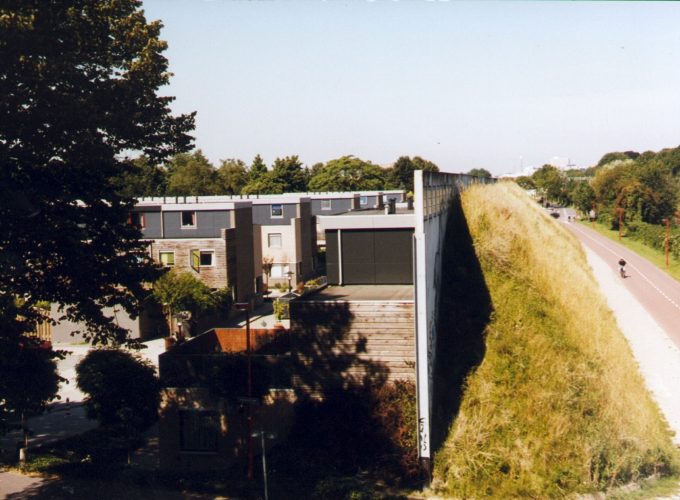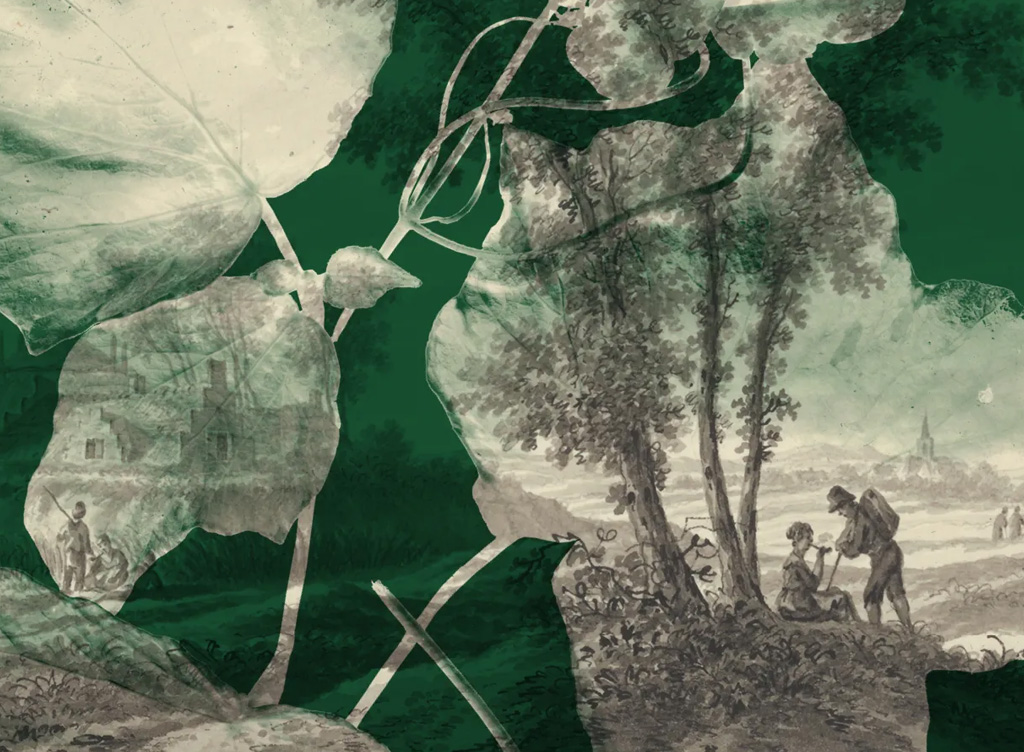Utrecht is dotted with special buildings, which you bike past regularly but know very little about. Take the soundwall houses on Houtensepad, built in a period when experiments with architecture were positively encouraged.
text: Martine Bakker
photography: K.H. Visser (HUA)
In 1995, an edition of the Muurkrant, the Wilma Bouw staff newsletter, carried a vague black-and-white photo of three men and a woman under two huge umbrellas. The caption read: ‘Happy rain in the Groene Lunet. Left, three Utrechters: Roel Slagter (deputy managing director of Wilma Bouw Utrecht) tries to ensure that alderman Jaap Zwart doesn’t fall out of the bus; alderman Annemiek Rijckenberg has already reached safety. Further, from left to right: state secretary Dick Tommel, Housing Experiments Steering Group (SEV) director Jim Schuyt and managing director of Wilma Bouw, Fred Maas.’
Very jolly, but surely a state secretary, two aldermen and three directors don’t just turn up for fun? No, this is a special occasion: the completion of the first soundwall houses in the Netherlands. Somewhat uncompromising, but nevertheless the first. A huge concrete wall and a solid grass wall on one side, and regular front doors and sheds, incongruously built from wood, plastic and bricks, on the other.
The recurring squares of nine glass bricks are all they have in common. These adorn the top of the concrete and the shed walls. Despite the solid appearance of the wall, the concrete started to leak (and was repaired) just a year after completion. The high, impenetrable wall is not only a sound barrier, but also makes the houses energy-efficient and fits in perfectly with the lunette of the New Dutch Water Line defence system a little further along.
The sound wall houses were designed by the Rotterdam-based architects SAS. They were built thanks to a special steering group known as the Housing Experiments Steering Group (SEV). This semi-government body was commissioned to experiment with housing, bearing in mind the enormous physical planning task facing the Netherlands at the time. The soundwall houses were one of their experiments. It’s striking that Wilma called his staff newsletter the Muurkrant, as this is also the name of the protest newsletters that Utrecht squatters hung on walls around the city between 1970 and 1983 (consistently read by the police).
A lot has changed since 1995. Building is now about profit rather than providing homes, squatting is illegal, and the SEV and Ministry of Public Housing have been disbanded. Luckily, the Minister returned in 2022, although without a Ministry. But the need to experiment remains. The building sector has an even bigger headache than noise now; the need to rein in the greenhouse effect.






